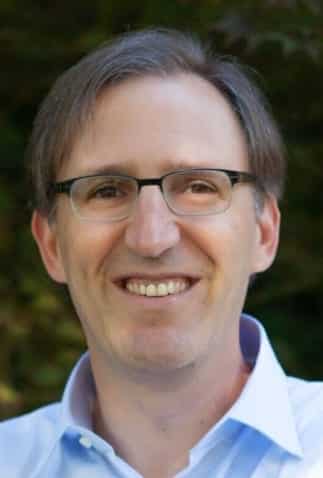Focusing on a small number of initiatives to drive a larger improvement process
By Scott Joftus
 Major reform efforts — such as improving student outcomes in large urban school districts — are often likened to turning an ocean liner: The work is slow and imprecise, but it can and must be done.
Major reform efforts — such as improving student outcomes in large urban school districts — are often likened to turning an ocean liner: The work is slow and imprecise, but it can and must be done.
What often goes unspoken is how the metaphor can be used to help make the critical changes that will enable schools to support learning for all students rather than as an excuse for the slow pace of change. Huge ocean liners turn with the help of a relatively small “trim tab,” which in adjustable flap (or mini rudder) attached to the main rudder. The captain can apply a small amount of pressure to turn the trim tab. Once the trim tab is turned, the hydrodynamics of the forward motion of the ship in the water causes the main rudder to turn using significantly less force than would have been required.
How the metaphor applies in education can be currently seen in a small town in Nebraska. With an estimated population of 50,000, Grand Island is the fourth largest city in the State. In addition to serving as a retail hub for the State’s central region, Grand Island is home to several sizable manufacturing plants. The manufacturing sector has contributed to continued population growth in the community and its schools, including a significant number of immigrants.
The number of students enrolled in Grand Island Public Schools (GIPS) in 2016-17 (9,896) represents 20 percent growth from its 2005-06 totals (8,224). The district is projecting enrollment growth of about 200 students per year, a comparable percentage increase as the recent past. In addition to its growing size, the district is becoming increasingly diverse. According to 2016-17 enrollment data, GIPS serves a majority-minority student population, with Hispanic students making up the largest portion of its base. Most GIPS students (67 percent) qualify for free or reduced priced lunches (FRPL)
 Dr. Tawana Grover became GIPS’ new superintendent in Summer 2016, providing a natural opportunity for the district to consider what it is doing well and how it might read just some of its strategies to more fully meet the changing needs of its students. Dr. Grover contracted with our firm FourPoint Education Partners to help her better understand district strengths and challenges and to consider if and how the district is best deploying its resources (time, people, and money) to support its students.
Dr. Tawana Grover became GIPS’ new superintendent in Summer 2016, providing a natural opportunity for the district to consider what it is doing well and how it might read just some of its strategies to more fully meet the changing needs of its students. Dr. Grover contracted with our firm FourPoint Education Partners to help her better understand district strengths and challenges and to consider if and how the district is best deploying its resources (time, people, and money) to support its students.
We found that GIPS is, by many measures, very accomplished. Most students are meeting or exceeding state standards, and the district provides a variety of high-quality academic programs and resources. Student achievement, however, trails state averages, and sizable gaps in performance among student subgroups and schools persist.
The problem, however, is that the GIPS administration, while talented and hard- working, lacked the capacity to help schools implement and monitor its many well-intended mandates effectively, leading to frustration and low morale among teachers and administrators, uneven implementation of initiatives, and disappointing results. FourPoint recommended shifting the theory of action to provide schools greater autonomy — and minimizing district mandates — while building the capacity of principals to be effective instructional leaders.
As part of this shift, FourPoint also recommended that the central office focus on only three mandates, or non-negotiables:
1.) Provide all teachers with embedded professional learning on a core set of high-impact, instructional strategies.
2.) Define the goals and structures for teacher collaborative time at each school level to ensure that all schools’ educators regularly analyze student outcomes, address individual students’ barriers to learning, plan effective lessons and units, and evaluate the implementation of programs.
3.) Use data to continuously improve teaching and learning by:
• Including principals in data consultations, during which they individually discuss with the district leadership their school’s student outcomes, classroom observations, and school improvement plans and progress.
• Creating data dashboards at the classroom, school, and district levels that enable educators and administrators to assess student, school, and district progress across multiple dimensions (e.g., academic, school culture, instructional practice).
• Supporting district and school staff in using data tools and dashboards individually and collaboratively to identify instructional improvements or interventions needed to meet all students’ learning needs.
• By focusing on only three non-negotiables, GIPS is using the same principle as the trim tab: Administrators are focusing on a small number of initiatives that they can implement well in order to drive a larger improvement process.
 Although implementation is only in the early stages for GIPS, my organization has a lot of evidence to suggest that the trim-tab strategy is a winner. For five years in the State of Kansas and three years in Washington, DC, we served as the support to all the lowest performing schools and districts in the system. To provide the support, our firm developed and managed a model called The Learning Network, in which —among other things — participating schools and districts work closely with a coach to identify root cause of low student performance, identify one or two strategies to address the root causes (the trim tab), and then carefully implement the strategies using performance management techniques that include using and tracking indicators of implementation and impact and making adjustments based on progress or lack of progress.
Although implementation is only in the early stages for GIPS, my organization has a lot of evidence to suggest that the trim-tab strategy is a winner. For five years in the State of Kansas and three years in Washington, DC, we served as the support to all the lowest performing schools and districts in the system. To provide the support, our firm developed and managed a model called The Learning Network, in which —among other things — participating schools and districts work closely with a coach to identify root cause of low student performance, identify one or two strategies to address the root causes (the trim tab), and then carefully implement the strategies using performance management techniques that include using and tracking indicators of implementation and impact and making adjustments based on progress or lack of progress.
Formative evaluations suggest that The Learning Network (TLN) was effective. For example, according to evaluations of participating LEAs conducted by graduate students at George Washington University’s Graduate School of Education and Human Development:
• On average, students in participating LEAs consistently increased achievement scores on state reading and math assessments at a faster pace than students in non-TLN districts.
• KLN districts outperformed non-TLN districts in 64 percent of the achievement comparisons in reading and in 57 percent of the achievement comparisons in math.
• In 2009-10, 23 out of 32 schools (72 percent) made AYP after the first year of working with a Learning Network coach.
• Over two-thirds (68 percent) of score comparisons to 2008-09 exhibited a significant increase over two years in reading and math for schools that worked with a coach in both 2009-10 and 2010-11.
• School and district administrators in districts making the greatest gains attributed much of their success to participation in The Learning Network.
• The vast majority of stakeholders involved in The Learning Network — including school, district, and state administrators — found great value in their participation.
 According to Diane DeBacker, former Commissioner of the Kansas State Department of Education, During our time working in Kansas, student achievement in TLN schools and districts not only increased but increased at a faster rate than non-TLN schools. Administrators told us that they greatly valued the support provided by (FourPoint) and attributed much of their gains to their work with TLN.”
According to Diane DeBacker, former Commissioner of the Kansas State Department of Education, During our time working in Kansas, student achievement in TLN schools and districts not only increased but increased at a faster rate than non-TLN schools. Administrators told us that they greatly valued the support provided by (FourPoint) and attributed much of their gains to their work with TLN.”
This success carried over into Washington, DC where our TLN work was managed by the District of Columbia’s Office of the State Superintendent of Education (OSSE). During the first year of DC implementation, grad students from GW’s Graduate School of Human Development found that:
• Most of the schools were on track to implement most of the goals from their action plans.
• School action plans aligned well with OSSE’s theory of action for school improvement and were perceived as valid and important strategies by principals.
• Most principals agreed that their transformation coaches were engaged in the implementation of the action plan.
• Supports provided by the coaches ranged from full-day visits; developing and reviewing lesson plans; observing teachers and providing feedback; facilitating community partnerships; providing new professional development for teachers, staff, and administrators; and directly supporting the principal in implementing the action plan.
• Due to the coaches’ participation in the implementation of the action plan, principals stated that they have experienced professional growth.
• Principals stated that they have grown to be better managers and improved their leadership skills.
• All of the principals stated that the action plan is the correct foundational step to having a positive impact on students’ performance. The level of impact initiated by the action plan varied by school, but overall principals viewed it positively. Principals also viewed the action plan and support from coaches as good tools that can and do contribute to increasing student academic performance. The principals believed that the action plan was key to their success in the current year and would continue to be so in the future.
Of the 16 DC priority schools with which FourPoint worked during the 2016-17 school year, 11 showed gains in math and 13 showed gains in ELA from the previous school year. Nine of these schools outpaced the average gains made across Washington, DC in math, and all 13 schools outpaced the average gains made across the city in ELA.
 Looking across two years, the results are similar. In math, 11 of the 15 schools participating in the TLN both school years demonstrated gains, with 7 of the schools outpacing the average gains made across Washington, DC. In ELA, 11 of the 14 schools participating in the TLN both school years demonstrated gains, with all but 1 outpacing the average gains made across Washington, DC.
Looking across two years, the results are similar. In math, 11 of the 15 schools participating in the TLN both school years demonstrated gains, with 7 of the schools outpacing the average gains made across Washington, DC. In ELA, 11 of the 14 schools participating in the TLN both school years demonstrated gains, with all but 1 outpacing the average gains made across Washington, DC.
This research is obviously not conclusive. It represents preliminary attempts to assess the impact of a school and district improvement model — The Learning Network — that emphasizes intense focus on a couple of high-impact strategies that will result in improved teaching and learning and, ultimately, improved outcomes for students.
But, as with the feedback from principals we are receiving in GIPS, the early results are promising. The ocean liner can be turned, but we need to go small to go big.
* OSSE defined gains as the reduction of the percentage of students scoring in levels 1 and 2 on PARCC.
Author
 Scott Joftus is the co-founder and president of FourPoint Education Partners, formerly Cross & Joftus. FourPoint Education Partners supports districts and states in planning strategically, developing leaders, and improving school quality so that all students can achieve to their full potential. Dr. Joftus is also adjunct faculty at George Washington University’s Graduate School of Education, where he teaches leadership and program evaluation.
Scott Joftus is the co-founder and president of FourPoint Education Partners, formerly Cross & Joftus. FourPoint Education Partners supports districts and states in planning strategically, developing leaders, and improving school quality so that all students can achieve to their full potential. Dr. Joftus is also adjunct faculty at George Washington University’s Graduate School of Education, where he teaches leadership and program evaluation.
Formerly, Dr. Joftus was an elementary teacher as a member of the first-ever corps of Teach for America. He can be reached at scott@fourpointeducation.com.
Follow Scott on Twitter.
Further Reading
- EdStrategies –Redesigning Schools For a Changing Future: A New C&J Resource
- Washington Post – Why a live, star-studded TV show on school reform is a problem
- US News – Ask Better School Reform Questions


